- europages
- >
- COMPANIES - SUPPLIERS - SERVICE PROVIDERS
- >
- 3d printing and additive manufacturing
Results for
3d printing and additive manufacturing - Import export

RPWORLD
China
3D printing or additive manufacturing (AM) is any of various processes for making a three-dimensional object of almost any shapes. At RPWORLD, additive manufacturing 3D printing is designed for functional prototypes, complex designs, and production components. - Materials selection Selective laser sintering, (SLS), Stereolithography (SLA) and Fused Deposition Modeling (FDM) are the most common additives manufacturing processes that RPWORLD uses to realize a project. - Cost-efficiently You can get the 3D printed parts of any possible shapes as you desire. And more importantly, since it doesn’t need the mold, it could be a cost-effective process for your custom parts. - Complex-geometries The structure of the 3D printed parts is not limited, you can nearly get any shapes as your part design.
Request for a quote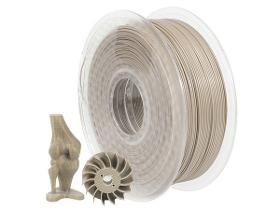
PEEKCHINA CO., LTD.
China
Process 3D Printing Additive Manufacturing Feature Low MOQ, 1pc acceptable. Customized Make. Complex Tolerance & Shape. MATERIAL GRADE ARKPEEK-1000: 100% PEEK Produced from virgin polyetheretherketone resin and offers the highest toughness and impact resistance of all types. ARKPEEK-CF30: 30% Carbon Fiber + 70% PEEK Carbon fibre reinforcement lends the material a high level of rigidity and creep strength, high mechanical strength and heat conductivity values. ARKPEEK-GF30: 30% Glass Fiber + 70% PEEK Glass filled PEEK exhibits increased mechanical strength and high rigidity. improved creep strength and dimensional stability are achieved by this glass filled PEEK. These properties make this material suitable for use in parts which are exposed to high static loads over long periods in high temperature conditions. ARKPEEK-MOD: 10% Carbon Fiber + 10% PTFE +10% Graphite + 70% PEEK
Request for a quote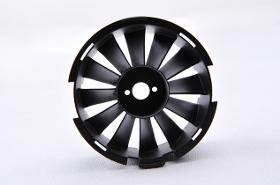
RPWORLD
China
3D printing or additive manufacturing (AM) is any of various processes for making a three-dimensional object of almost any shapes. At RPWORLD, additive manufacturing 3D printing is designed for functional prototypes, complex designs, and production components. - Materials selection Selective laser sintering, (SLS), Stereolithography (SLA) and Fused Deposition Modeling (FDM) are the most common additives manufacturing processes that RPWORLD uses to realize a project. - Cost-efficiently You can get the 3D printed parts of any possible shapes as you desire. And more importantly, since it doesn’t need the mold, it could be a cost-effective process for your custom parts. - Complex-geometries The structure of the 3D printed parts is not limited, you can nearly get any shapes as your part design.
Request for a quote
RPWORLD
China
3D printing or additive manufacturing (AM) is any of various processes for making a three-dimensional object of almost any shapes. At RPWORLD, additive manufacturing 3D printing is designed for functional prototypes, complex designs, and production components. - Materials selection Selective laser sintering, (SLS), Stereolithography (SLA) and Fused Deposition Modeling (FDM) are the most common additives manufacturing processes that RPWORLD uses to realize a project. - Cost-efficiently You can get the 3D printed parts of any possible shapes as you desire. And more importantly, since it doesn’t need the mold, it could be a cost-effective process for your custom parts. - Complex-geometries The structure of the 3D printed parts is not limited, you can nearly get any shapes as your part design.
Request for a quote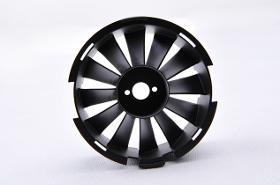
RPWORLD
China
3D printing or additive manufacturing (AM) is any of various processes for making a three-dimensional object of almost any shapes. At RPWORLD, additive manufacturing 3D printing is designed for functional prototypes, complex designs, and production components. - Materials selection Selective laser sintering, (SLS), Stereolithography (SLA) and Fused Deposition Modeling (FDM) are the most common additives manufacturing processes that RPWORLD uses to realize a project. - Cost-efficiently You can get the 3D printed parts of any possible shapes as you desire. And more importantly, since it doesn’t need the mold, it could be a cost-effective process for your custom parts. - Complex-geometries The structure of the 3D printed parts is not limited, you can nearly get any shapes as your part design.
Request for a quote
RPWORLD
China
3D printing or additive manufacturing (AM) is any of various processes for making a three-dimensional object of almost any shapes. At RPWORLD, additive manufacturing 3D printing is designed for functional prototypes, complex designs, and production components. - Materials selection Selective laser sintering, (SLS), Stereolithography (SLA) and Fused Deposition Modeling (FDM) are the most common additives manufacturing processes that RPWORLD uses to realize a project. - Cost-efficiently You can get the 3D printed parts of any possible shapes as you desire. And more importantly, since it doesn’t need the mold, it could be a cost-effective process for your custom parts. - Complex-geometries The structure of the 3D printed parts is not limited, you can nearly get any shapes as your part design.
Request for a quote
RPWORLD
China
3D printing or additive manufacturing (AM) is any of various processes for making a three-dimensional object of almost any shapes. At RPWORLD, additive manufacturing 3D printing is designed for functional prototypes, complex designs, and production components. - Materials selection Selective laser sintering, (SLS), Stereolithography (SLA) and Fused Deposition Modeling (FDM) are the most common additives manufacturing processes that RPWORLD uses to realize a project. - Cost-efficiently You can get the 3D printed parts of any possible shapes as you desire. And more importantly, since it doesn’t need the mold, it could be a cost-effective process for your custom parts. - Complex-geometries The structure of the 3D printed parts is not limited, you can nearly get any shapes as your part design.
Request for a quote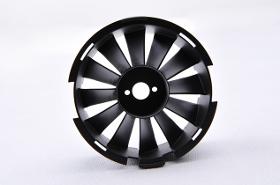
RPWORLD
China
3D printing or additive manufacturing (AM) is any of various processes for making a three-dimensional object of almost any shapes. At RPWORLD, additive manufacturing 3D printing is designed for functional prototypes, complex designs, and production components. - Materials selection Selective laser sintering, (SLS), Stereolithography (SLA) and Fused Deposition Modeling (FDM) are the most common additives manufacturing processes that RPWORLD uses to realize a project. - Cost-efficiently You can get the 3D printed parts of any possible shapes as you desire. And more importantly, since it doesn’t need the mold, it could be a cost-effective process for your custom parts. - Complex-geometries The structure of the 3D printed parts is not limited, you can nearly get any shapes as your part design.
Request for a quote
RPWORLD
China
3D printing or additive manufacturing (AM) is any of various processes for making a three-dimensional object of almost any shapes. At RPWORLD, additive manufacturing 3D printing is designed for functional prototypes, complex designs, and production components. - Materials selection Selective laser sintering, (SLS), Stereolithography (SLA) and Fused Deposition Modeling (FDM) are the most common additives manufacturing processes that RPWORLD uses to realize a project. - Cost-efficiently You can get the 3D printed parts of any possible shapes as you desire. And more importantly, since it doesn’t need the mold, it could be a cost-effective process for your custom parts. - Complex-geometries The structure of the 3D printed parts is not limited, you can nearly get any shapes as your part design.
Request for a quote
RPWORLD
China
3D printing or additive manufacturing (AM) is any of various processes for making a three-dimensional object of almost any shapes. At RPWORLD, additive manufacturing 3D printing is designed for functional prototypes, complex designs, and production components. - Materials selection Selective laser sintering, (SLS), Stereolithography (SLA) and Fused Deposition Modeling (FDM) are the most common additives manufacturing processes that RPWORLD uses to realize a project. - Cost-efficiently You can get the 3D printed parts of any possible shapes as you desire. And more importantly, since it doesn’t need the mold, it could be a cost-effective process for your custom parts. - Complex-geometries The structure of the 3D printed parts is not limited, you can nearly get any shapes as your part design.
Request for a quote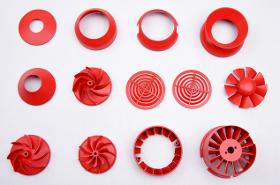
RPWORLD
China
3D printing or additive manufacturing (AM) is any of various processes for making a three-dimensional object of almost any shapes. At RPWORLD, additive manufacturing 3D printing is designed for functional prototypes, complex designs, and production components. - Materials selection Selective laser sintering, (SLS), Stereolithography (SLA) and Fused Deposition Modeling (FDM) are the most common additives manufacturing processes that RPWORLD uses to realize a project. - Cost-efficiently You can get the 3D printed parts of any possible shapes as you desire. And more importantly, since it doesn’t need the mold, it could be a cost-effective process for your custom parts. - Complex-geometries The structure of the 3D printed parts is not limited, you can nearly get any shapes as your part design.
Request for a quote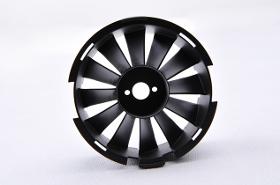
RPWORLD
China
3D printing or additive manufacturing (AM) is any of various processes for making a three-dimensional object of almost any shapes. At RPWORLD, additive manufacturing 3D printing is designed for functional prototypes, complex designs, and production components. - Materials selection Selective laser sintering, (SLS), Stereolithography (SLA) and Fused Deposition Modeling (FDM) are the most common additives manufacturing processes that RPWORLD uses to realize a project. - Cost-efficiently You can get the 3D printed parts of any possible shapes as you desire. And more importantly, since it doesn’t need the mold, it could be a cost-effective process for your custom parts. - Complex-geometries The structure of the 3D printed parts is not limited, you can nearly get any shapes as your part design.
Request for a quote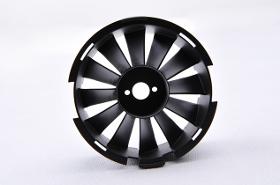
RPWORLD
China
3D printing or additive manufacturing (AM) is any of various processes for making a three-dimensional object of almost any shapes. At RPWORLD, additive manufacturing 3D printing is designed for functional prototypes, complex designs, and production components. - Materials selection Selective laser sintering, (SLS), Stereolithography (SLA) and Fused Deposition Modeling (FDM) are the most common additives manufacturing processes that RPWORLD uses to realize a project. - Cost-efficiently You can get the 3D printed parts of any possible shapes as you desire. And more importantly, since it doesn’t need the mold, it could be a cost-effective process for your custom parts. - Complex-geometries The structure of the 3D printed parts is not limited, you can nearly get any shapes as your part design.
Request for a quote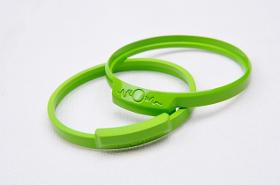
RPWORLD
China
3D printing or additive manufacturing (AM) is any of various processes for making a three-dimensional object of almost any shapes. At RPWORLD, additive manufacturing 3D printing is designed for functional prototypes, complex designs, and production components. - Materials selection Selective laser sintering, (SLS), Stereolithography (SLA) and Fused Deposition Modeling (FDM) are the most common additives manufacturing processes that RPWORLD uses to realize a project. - Cost-efficiently You can get the 3D printed parts of any possible shapes as you desire. And more importantly, since it doesn’t need the mold, it could be a cost-effective process for your custom parts. - Complex-geometries The structure of the 3D printed parts is not limited, you can nearly get any shapes as your part design.
Request for a quote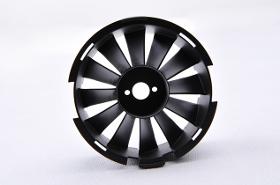
RPWORLD
China
3D printing or additive manufacturing (AM) is any of various processes for making a three-dimensional object of almost any shapes. At RPWORLD, additive manufacturing 3D printing is designed for functional prototypes, complex designs, and production components. - Materials selection Selective laser sintering, (SLS), Stereolithography (SLA) and Fused Deposition Modeling (FDM) are the most common additives manufacturing processes that RPWORLD uses to realize a project. - Cost-efficiently You can get the 3D printed parts of any possible shapes as you desire. And more importantly, since it doesn’t need the mold, it could be a cost-effective process for your custom parts. - Complex-geometries The structure of the 3D printed parts is not limited, you can nearly get any shapes as your part design.
Request for a quote
RPWORLD
China
3D printing or additive manufacturing (AM) is any of various processes for making a three-dimensional object of almost any shapes. At RPWORLD, additive manufacturing 3D printing is designed for functional prototypes, complex designs, and production components. - Materials selection Selective laser sintering, (SLS), Stereolithography (SLA) and Fused Deposition Modeling (FDM) are the most common additives manufacturing processes that RPWORLD uses to realize a project. - Cost-efficiently You can get the 3D printed parts of any possible shapes as you desire. And more importantly, since it doesn’t need the mold, it could be a cost-effective process for your custom parts. - Complex-geometries The structure of the 3D printed parts is not limited, you can nearly get any shapes as your part design.
Request for a quote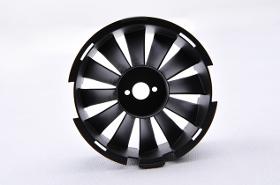
RPWORLD
China
3D printing or additive manufacturing (AM) is any of various processes for making a three-dimensional object of almost any shapes. At RPWORLD, additive manufacturing 3D printing is designed for functional prototypes, complex designs, and production components. - Materials selection Selective laser sintering, (SLS), Stereolithography (SLA) and Fused Deposition Modeling (FDM) are the most common additives manufacturing processes that RPWORLD uses to realize a project. - Cost-efficiently You can get the 3D printed parts of any possible shapes as you desire. And more importantly, since it doesn’t need the mold, it could be a cost-effective process for your custom parts. - Complex-geometries The structure of the 3D printed parts is not limited, you can nearly get any shapes as your part design.
Request for a quoteDo you sell or make similar products?
Sign up to europages and have your products listed

RPWORLD
China
3D printing or additive manufacturing (AM) is any of various processes for making a three-dimensional object of almost any shapes. At RPWORLD, additive manufacturing 3D printing is designed for functional prototypes, complex designs, and production components. - Materials selection Selective laser sintering, (SLS), Stereolithography (SLA) and Fused Deposition Modeling (FDM) are the most common additives manufacturing processes that RPWORLD uses to realize a project. - Cost-efficiently You can get the 3D printed parts of any possible shapes as you desire. And more importantly, since it doesn’t need the mold, it could be a cost-effective process for your custom parts. - Complex-geometries The structure of the 3D printed parts is not limited, you can nearly get any shapes as your part design.
Request for a quote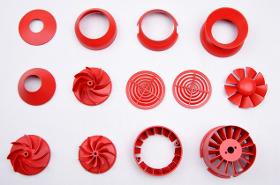
RPWORLD
China
3D printing or additive manufacturing (AM) is any of various processes for making a three-dimensional object of almost any shapes. At RPWORLD, additive manufacturing 3D printing is designed for functional prototypes, complex designs, and production components. - Materials selection Selective laser sintering, (SLS), Stereolithography (SLA) and Fused Deposition Modeling (FDM) are the most common additives manufacturing processes that RPWORLD uses to realize a project. - Cost-efficiently You can get the 3D printed parts of any possible shapes as you desire. And more importantly, since it doesn’t need the mold, it could be a cost-effective process for your custom parts. - Complex-geometries The structure of the 3D printed parts is not limited, you can nearly get any shapes as your part design.
Request for a quote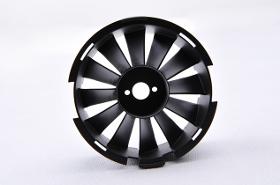
RPWORLD
China
3D printing or additive manufacturing (AM) is any of various processes for making a three-dimensional object of almost any shapes. At RPWORLD, additive manufacturing 3D printing is designed for functional prototypes, complex designs, and production components. - Materials selection Selective laser sintering, (SLS), Stereolithography (SLA) and Fused Deposition Modeling (FDM) are the most common additives manufacturing processes that RPWORLD uses to realize a project. - Cost-efficiently You can get the 3D printed parts of any possible shapes as you desire. And more importantly, since it doesn’t need the mold, it could be a cost-effective process for your custom parts. - Complex-geometries The structure of the 3D printed parts is not limited, you can nearly get any shapes as your part design.
Request for a quote
DRESSLER GROUP
Germany
Two current examples of Dressler Group innovations: Spherical Powder Technology (SPT) and the development of integrated processes. SPT is a process that allows powders to be made out of high-performance polymers that cannot otherwise be pulverised. This opens up completely new kinds of applications, using processes such as 3D printing/additive manufacturing, that were equally impossible before. Meanwhile, integrated processes allow grinding, sieving and dust removal to be carried out in a single operation rather than separate steps, thus saving energy and time.
Request for a quote
SEPA EUROPE GMBH
Germany
The chip cooler of the HXB series by SEPA EUROPE is a compact combination of fan and heat sink and is an attractively priced combination with an adequate cooling capacity. But the development engineers at SEPA EUROPE wanted to go further and this pushing ahead marked the birth of the 3DQler. The cooperation with the experts of APWORKS provided the decisive impulse. Due to the metal 3D printing, also known as additive manufacturing, APWORKS is in the position to produce geometrically highly complex heat sinks. Without having to change the external dimensions or make the fan more powerful, the additively manufactured version can be realized with 30% more efficient waste heat. With the 3DQler, SEPA EUROPE and APWORKS have developed a modern and active cooling concept that offers numerous advantages: Freedom of design with regard to installation space and a reduction of the manufacturing costs.
Request for a quote
SUPER-FILAMENT EINE MARKE DER ADDITIVE MATERIALS GMBH
Germany
Our extensive expertise spans various applications, including model construction, prototyping, and the production of tools for manufacturing technology. Consistent High Quality and Color Accuracy Across Batches: Our unwavering commitment to consistently high quality and color accuracy across batches allows you, as a customer, to fully focus on the production of your product. Wide Standard Product Portfolio: With a broad standard product portfolio, we offer an impressive selection of materials and colors for various 3D printing applications. From classic materials like PLA, PET-G, ASA, ABS to High-Performance Biopolymers and wood filaments, we meet your most demanding requirements. Custom Manufacturing: Our flexibility is evident in the option for custom manufacturing. Decide not only on material and color but also on spool type and packaging size, whether it's a standard plastic spool, recycled plastic spool, or environmentally friendly cardboard spool.
Request for a quote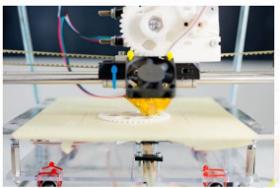
MITCHELL AND SON 3D PRINTING SERVICE
United Kingdom
3D printing or additive manufacturing is a process of making three dimensional solid objects from a digital file. The creation of a 3D printed object is achieved using additive processes. Mitchell and Son 3D Printing Service provides a totally bespoke 3D Printing Service for all sectors using a range of materials. Additive manufacturing uses data computer-aided-design (CAD) software or 3D object scanners to direct hardware to deposit material, layer upon layer, in precise geometric shapes. . It is defined as the process of joining materials to make objects from 3D model data, usually layer upon layer. Benefits of additive manufacturing (3D Printing Below are four major advantages that additive manufacturing can provide to help companies reduce cost, timing, and risk. ... 4 Major Advantages of Additive Manufacturing Reduced Tooling Costs. ... Quicker Speed to Market. ... Easily Test Complex Component Geometries. ... Better Component Quality.
Request for a quote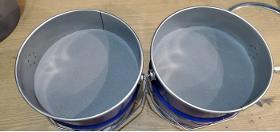
NANOCOM LLC
Russia
Application of quasicrystalline powder Al-Cu-Fe: Filler for polymers and elastomers to improve physical, mechanical and antifriction characteristics, wear resistance, hydrophobicity and adhesion. Significant increase in wear resistance in Teflon (PTFE), in Polyphenylene sulfide (PPS); Filler for polymer powders used in 3D printing, Selective Laser Sintering (SLS) additive manufacturing; Development of new composite materials and alloys with improved characteristics in comparison with the original; Reducing friction losses, increasing the service life of units and assemblies, increasing energy efficiency and reducing energy consumption of equipment as an additive in the lubrication systems of mechanisms; Creation of coatings: anti-friction, non-stick, anti-stick, hydrophobic, reducing the level of deposits and slagging of pipes and containers; We propose to test a quasicrystalline powder of the AlCuFe system and its variations doped with boron or silicon.
Request for a quoteResults for
3d printing and additive manufacturing - Import exportNumber of results
26 ProductsCountries
Company type